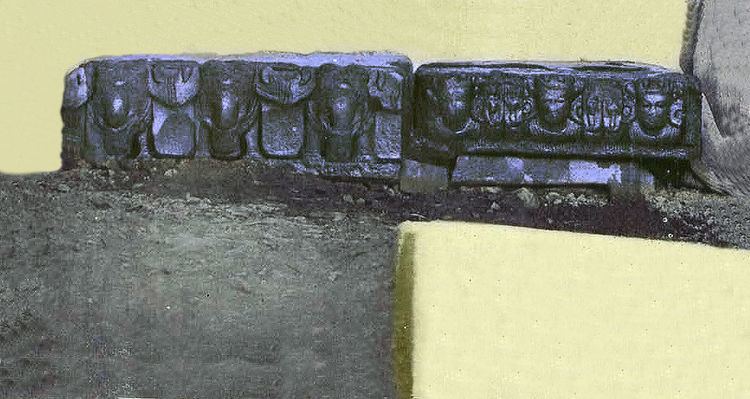 | ||
Ancient Kamrup was period of Kamrup spanning from prehistoric to early medieval times, consisting of Western Assam and North Bengal which under Kamarupa kingdom covered entire Brahmaputra valley, North Bangladesh, Bhutan and Purnea.
Contents
Capital region
Modern Kamrup region served as capital of ancient Kamrup. Chinese traveller Yuan Chwang visited the capital area and observed that land was low and moist and that the crops were regular. Cocoa-nuts and jack-fruits grew abundantly and were appreciated by the people. The climate was genial.
Culture
The primary language used by Aryan people of land was old Kamrupi language, which also act as lingua franca among non-Aryan peoples. Kamrupi language was a variety of eastern Maithili and Yuan Chwang noted that the spoken language of Kamrup differed only a little from the language spoken in mid-India i.e. Magadha and Mithila. During historic times it was through Mithila that Aryan culture and civilization spread into the Kamrup. From Kamrup in the north that the Aryans gradually spread towards the south to Gauda, north of the Ganges, and to Samatata, south of the Ganges.
Yuan Chwang observed that people of Kamrup were honest. Their speech differed a little from that of mid-India. They were of violent disposition but were persevering students. They worshipped the Devas and did not believe in Buddhism. The Deva-temples were some hundreds in number and the various systems had some myriads of professed adherents. The few Buddhists in the country performed their acts of devotion in secret.
Industry
Harsha Charita mentions of ingenuously constructed royal umbrella of exquisite workmanship studded with valuable gems, puthis written on Sachi bark, dyed cane mats, Agar-essence, musk in silk bags, liquid molasses in earthen pots, utensils, paintings, a pair of Brahmani ducks in a cage made of cane and overlaid with gold and a considerable quantity of silk fabrics some of which were so even and polished that they resembled Bhujapatramade made of Muga and pat fabrics.
Chinese accounts states boat-building was a major industry in ancient Kamrup and iron works was mentioned as prosperous. The manufacture of molasses in liquid form, from sugar-cane juice, is still a peculiar practice in the modern Kamrup district. The Muga and pat silk fabrics are still produced in modern Kamrup. Puthis written on Sachi bark are still abundant in Assam and musk is obtained from the Bhutan hills.
Later periods
In medieval times, it Kamrup lost its unified status and became a battlefield of different powers trying to gain control over Kamrup in absence of strong local rulers, but none could hold Kamrup for long. Thus it remain untouched by any foreign cultural influences including in its language. Though Kamrup underwent such a hostile period, it had major literary activities in this time. Chandra Bharati, Bhattadeva, Ananta Kandali, Madhava Kandali, Sankardeva composed epics in the Kamrupi language.
In the colonial period, the size of Kamrup was greatly reduced and limited to an administrative district separated from most of North Bengal areas. In the twentieth century, Kamrup became a center of major industrial development. Guwahati, the largest city of the region, became a major urban center with the character of a veritable metropolis. Thus, the cultural and political capital of ancient Kamrup became the major hub of culture and business again.
